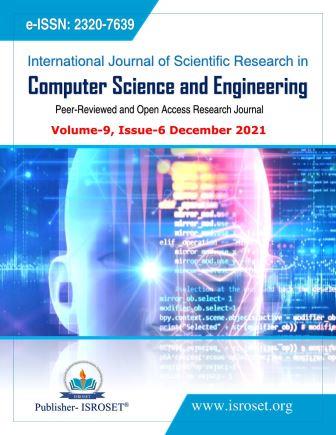Ergot Alkaloids against SARS-COV-2 Main Protease
Keywords:
Docking analysis, Ergotamine, Dydroergotamine, M-proAbstract
The present study based on the Docking approach it focused on Ergot alkaloids for instance Ergotamine, Dihydroergotamine, Ergocristine, and Dihydroergocristine, which they obtained excellent results of both Binding Energy, of about -11,29 kcal mol -1; -12,16 kcal mol -1; -12,03 kcal mol -1 and -12,2 kcal mol -1, respectively and in terms of estimation of inhibitory constants Ki (5,30 nM, 1,22 nM 1,52 nM, and 1, 14 nM, respectively. This has led to the conclusion, that they could be excellent candidates against SARS-COV-2 M protease, even though further in vitro and in vivo studies are needed to confirm this preliminary analysis.
References
Campos, D., Fulco, U. L., de Oliveira, C., and Oliveira, J. “ SARS-CoV-2 virus infection: Targets and antiviral pharmacological strategies”, Journal of evidence-based medicine, Vol. 13, Issue. 4, pp.255–260 , 2020. https://doi.org/10.1111/jebm.12414.
Huang, F., Li, Y., Leung, E. L., Liu, X., Liu, K., Wang, Q., Lan, Y., Li, X., Yu, H., Cui, L., Luo, H., and Luo, L. “ A review of therapeutic agents and Chinese herbal medicines against SARS-COV-2 (COVID-19). Pharmacological research, Vol.158, pp.104929 , 2020. https://doi.org/10.1016/j.phrs.2020.104929.
Clementi, N., Scagnolari, C., D`Amore, A., Palombi, F., Criscuolo, E., Frasca, F., Pierangeli, A., Mancini, N., Antonelli, G., Clementi, M., Carpaneto, A., andFilippini, A. “Naringenin is a powerful inhibitor of SARS-CoV-2 infection in vitro. Pharmacological research, Vol.163, pp.105255, 2021. https://doi.org/10.1016/j.phrs.2020.105255.
Beeraka, N. M., Tulimilli, S. V., Karnik, M., Sadhu, S. P., Pragada, R. R., Aliev, G., & Madhunapantula, S. “The Current Status and Challenges in the Development of Vaccines and Drugs against Severe Acute Respiratory Syndrome-Corona Virus-2 (SARS-CoV-2). BioMed research international, Vol.2021, pp. 8160860, 2021. https://doi.org/10.1155/2021/8160860.
Ferreira, L. G., Dos Santos, R. N., Oliva, G., and Andricopulo, A. D. “Molecular docking and structure-based drug design strategies”, Molecules (Basel, Switzerland), Vol.20, Issue.7 , pp. 13384–13421, 2015. https://doi.org/10.3390/molecules200713384.
Lohning, A. E., Levonis, S. M., Williams-Noonan, B., and Schweiker, S. S. “A Practical Guide to Molecular Docking and Homology Modelling for Medicinal Chemists”, Current topics in medicinal chemistry, Vol.17, Issue.18 , pp. 2023–2040, 2017. https://doi.org/10.2174/1568026617666170130110827.
Pettersen, E. F., Goddard, T. D., Huang, C. C., Couch, G. S., Greenblatt, D. M., Meng, E. C., and Ferrin, T. E. “ UCSF Chimera--a visualization system for exploratory research and analysis”, Journal of computational chemistry, Vol. 25, Issue.13 , pp. 1605–1612, 2004. https://doi.org/10.1002/jcc.20084.
Valdés-Tresanco, M. S., Valdés-Tresanco, M. E., Valiente, P. A., and Moreno, E. “ AMDock: a versatile graphical tool for assisting molecular docking with Autodock Vina and Autodock4”, Biology direct, Vol.15, Issue. 1, pp. 12, 2020. https://doi.org/10.1186/s13062-020-00267-2.
Forli, S., Huey, R., Pique, M. E., Sanner, M. F., Goodsell, D. S., and Olson, A. J. “ Computational protein-ligand docking and virtual drug screening with the AutoDock suite”, Nature protocols, Vol.11, Issue.5, pp.905–919, 2016. https://doi.org/10.1038/nprot.2016.051.
Silberstein, S. D., and McCrory, D. C. “ Ergotamine and dihydroergotamine: history, pharmacology, and efficacy”, Headache: The Journal of Head and Face Pain, Vol.43, Issue.2, pp.144-166, 2003.
Lei, X., Yu, J., Niu, Q., Liu, J., Fraering, P. C., and Wu, F. “ The FDA-approved natural product dihydroergocristine reduces the production of the Alzheimer’s disease amyloid-? peptides”, Scientific reports, Vol.5 Issue.1, pp.1-11, 2015.
Roquebert, J., and Demichel, P. “ Agonist/antagonist activity of ergocristine at alpha-adrenoceptors in the rat”,Fundamental & clinical pharmacology, Vol.1, Issue.1, 23-33, 1987.
Downloads
Published
How to Cite
Issue
Section
License

This work is licensed under a Creative Commons Attribution 4.0 International License.
Authors contributing to this journal agree to publish their articles under the Creative Commons Attribution 4.0 International License, allowing third parties to share their work (copy, distribute, transmit) and to adapt it, under the condition that the authors are given credit and that in the event of reuse or distribution, the terms of this license are made clear.







